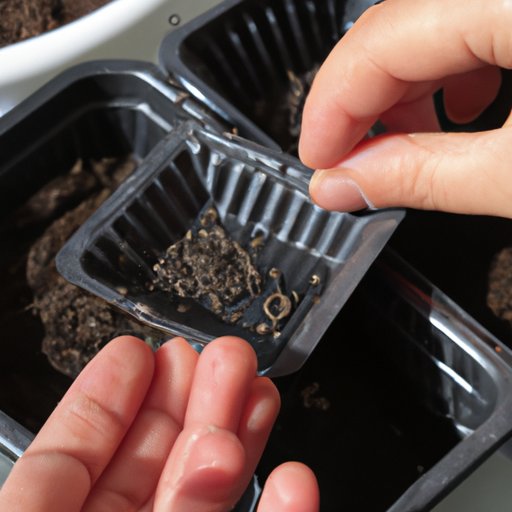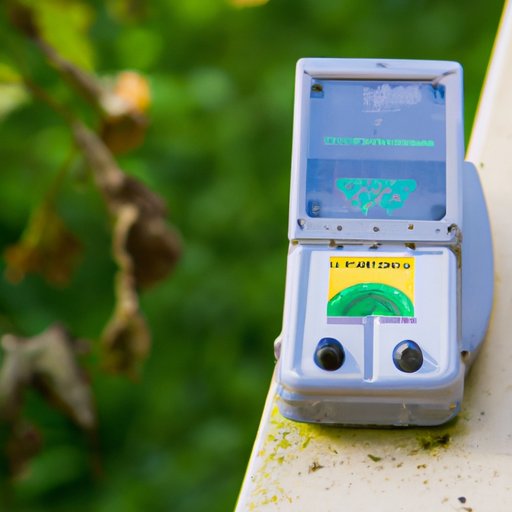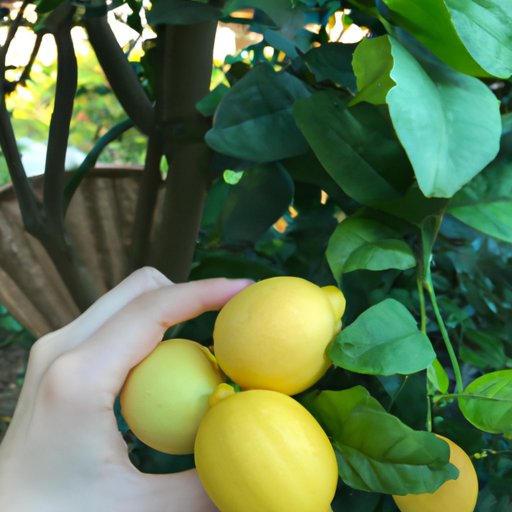Introduction
Growing your own lemons from seed can be both fun and rewarding. It’s an activity that anyone can take part in, regardless of their experience level or gardening knowledge. Plus, you’ll end up with delicious lemons that you can enjoy or share with others.
In this article, we’ll discuss why starting a lemon seed is a great idea and provide an overview of the process. We’ll then go into detail about each step, including gathering materials, planting the seeds, providing adequate water and light, fertilizing regularly, pruning and transplanting as needed, monitoring for pests and diseases, and harvesting and enjoying the lemons.
Why Start a Lemon Seed?
There are many reasons to start a lemon seed, such as:
- You can save money. Growing your own fruits and vegetables is much less expensive than buying them from the store.
- You can have access to fresher, healthier produce. Store-bought fruits and vegetables may look attractive, but they often lack flavor and nutrition.
- You can have control over what goes into your food. When you grow your own produce, you know exactly what you’re putting into it.
- It’s a fun, satisfying activity. Gardening is a great way to get outdoors and enjoy nature while also producing something meaningful.
Starting a lemon seed is a great way to reap all of these benefits. With patience and care, you can grow your own lemon tree at home!
Overview of the Process
The process of starting a lemon seed includes several steps, which we’ll discuss in detail below. In general, here’s what you need to do:
- Gather and prepare the right materials.
- Plant the seeds in containers.
- Provide adequate water and light.
- Fertilize regularly.
- Prune and transplant as needed.
- Monitor for pests and diseases.
- Harvest and enjoy the lemons!
Gather and Prepare the Right Materials
The first step in starting a lemon seed is to gather and prepare the right materials. Here’s what you’ll need:
- Lemon seeds.
- Potting soil.
- Containers.
- Water.
- Fertilizer.
What You Need
Start by gathering the necessary materials. You can find lemon seeds online or in some stores. Make sure to buy organic, non-GMO seeds if possible.
Next, you’ll need potting soil. This type of soil is specially formulated to provide optimal growth conditions for plants. Look for a mix that contains peat moss, vermiculite, and perlite.
You’ll also need containers to plant the seeds in. The containers should be at least 6 inches deep and have drainage holes in the bottom. Plastic pots work well, but you can also use ceramic or terra cotta containers.
Finally, you’ll need water and fertilizer. Water the plants regularly to keep the soil moist, and use a balanced fertilizer every few weeks to provide nutrients.
How to Prepare the Soil
Before planting the seeds, prepare the soil. Fill the containers with the potting soil, making sure to leave about 2 inches of space at the top. Then, add a few drops of liquid fertilizer to the soil and mix it in thoroughly.
Next, dampen the soil with water. Make sure the soil is evenly moist but not soggy. Allow the soil to drain before planting the seeds.

Plant the Seeds in Containers
Once the soil is prepared, it’s time to plant the seeds. Here’s how to do it:
Selecting the Container
Choose a container that is large enough to accommodate the mature tree. If you plan to move the tree outside, make sure the container is lightweight and easy to transport.
Planting the Seeds
Place two to three lemon seeds in the center of the container. Cover the seeds with a thin layer of soil, and press down lightly to ensure good contact with the soil.
Finally, mist the soil with water and place the container in a warm, sunny spot. Keep the soil moist but not too wet, and the seeds should begin to sprout within a few days.
Provide Adequate Water and Light
Once the seeds have sprouted, it’s important to provide adequate water and light. Here’s what you need to know:
How Much Water and Light Do Lemons Need?
Lemons need plenty of sunlight to thrive. Place the container in an area that receives at least six hours of direct sunlight each day. Water the plants regularly to keep the soil moist, but avoid over-watering.
Tips for Maintaining Water and Light Levels
To ensure that your lemon tree gets the right amount of water and light, use a moisture meter to check the soil moisture levels. Water the plants when the meter indicates that the soil is dry. Also, if possible, move the container to a sunnier spot during the summer months to maximize growth.
Fertilize Regularly
Fertilizing your lemon tree is essential for healthy growth. Here’s what you need to know about fertilizing:
When and How Often to Fertilize
Fertilize your lemon tree every two weeks during the growing season (spring through fall). Use a balanced fertilizer, such as one that contains nitrogen, phosphorus, and potassium.
Types of Fertilizers
Organic fertilizers are best for lemon trees. These include compost, manure, and fish emulsion. You can also use a synthetic fertilizer, just make sure to follow the directions on the package.
Prune and Transplant as Needed
As your lemon tree grows, you may need to prune and transplant it. Here’s what you need to know:
When and How to Prune
Prune your lemon tree as needed to maintain its shape. Cut off dead or diseased branches, and trim back any branches that are growing out of control.
Transplanting Tips
If your lemon tree has outgrown its current container, it’s time to transplant it. Choose a container that is at least twice the size of the current one. Prepare the soil as described above, then carefully remove the lemon tree from the old container and place it in the new one. Make sure to firm the soil around the roots and water the tree thoroughly.

Monitor for Pests and Diseases
Pests and diseases can cause serious damage to your lemon tree. Here’s what you need to know:
Common Pests and Diseases
Common pests include aphids, scale insects, and mealybugs. Common diseases include citrus canker and citrus greening. Both pests and diseases can be prevented and controlled with proper care and maintenance.
Prevention and Control Measures
To prevent pests and diseases, make sure to water the tree regularly and provide adequate light. If you notice signs of pests or diseases, take action immediately. Spraying the tree with a mixture of water and dish soap can help to control pests. For diseases, use an appropriate fungicide according to the manufacturer’s instructions.

Harvest and Enjoy the Lemons!
Once your lemon tree is established, you can start harvesting the lemons. Here’s what you need to know:
When to Pick the Lemons
Lemons are ripe and ready to pick when they are bright yellow and have a slightly soft texture. You can also test for ripeness by gently squeezing the lemon—if it yields to slight pressure, it’s ripe.
Ways to Enjoy the Lemons
There are many ways to enjoy freshly picked lemons. Squeeze the juice over salads and fish dishes, or use the zest to add flavor to cakes and cookies. You can also slice the lemons and add them to drinks or cocktails. Finally, don’t forget to share your lemons with family and friends!
Conclusion
Starting a lemon seed is a fun and rewarding experience. By following the steps outlined in this article, you can successfully grow your own lemon tree at home. From gathering materials and planting the seeds to providing adequate water and light, fertilizing regularly, pruning and transplanting as needed, monitoring for pests and diseases, and harvesting and enjoying the lemons, you’ll be able to reap all the benefits of growing your own produce.
(Note: Is this article not meeting your expectations? Do you have knowledge or insights to share? Unlock new opportunities and expand your reach by joining our authors team. Click Registration to join us and share your expertise with our readers.)
